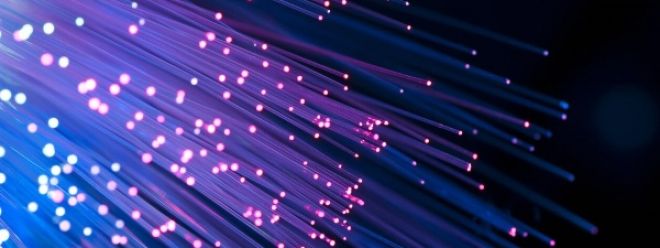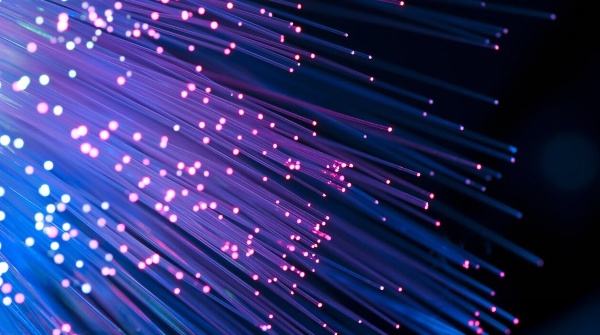From Fiber to 5G: Comparison of Internet Connection Types

There are now more options to connect to the Internet than
ever before. Technology is always changing, and Internet options may be a bit
confused with DSL, fiber, or 5G. Please review our guide to Internet connection
types, it may help you determine the best method for you.
Connecting to the Internet has never been easier: whether
you are chatting in a coffee shop or installing a smart smoke detector,
information is uploaded to the Internet everywhere. But now there are more
choices than ever, so it is difficult to decide which technology is best for
you. We will walk you through all the major Internet connection types and how
to choose the best connection type.

Briefly analyze your options
Every Internet connection is defined by its technology-how
the connection uploads and downloads Internet information.
DSL: Short for "Digital Subscriber Line",
DSL uses an existing telephone line to send data between your computer and the
Internet. The frequency of information transmission is different from the
frequency of voice calls. DSL is widely available and can be connected directly
from your ISP to your home.
Cable: Data is transmitted through electricity and
used for the Internet or cable television through coaxial cables built in the
community. Wide availability, except for more rural and remote areas.
Satellite: Your computer sends information through an
antenna to a satellite orbiting the earth, and then the satellite communicates
with the network operation center to obtain the data you request.
Cellular: Mobile broadband allows you to connect to
other devices through cell towers, use your mobile device or hotspot, and
connect to the Internet wirelessly anytime, anywhere.
Optical fiber: Similar to a cable, but it uses small
glass filaments to transmit information as light. Minimal availability and
construction costs-mainly accessible in big cities.
"Theoretically, the growth potential of optical fiber
is unlimited, which is impossible for other physical media...In an ideal world,
all Internet connections are optical fibers." -TrevorTextor, Project
Manager, Rural IT and Connection Consultant.
Speed is the decisive factor
For consumers, the most obvious difference between these
connection types will be speed. Each technology provides a different range of
connection speeds, which will affect the time required to upload, download,
stream, and browse.
DSL is usually the slowest Internet, offering customers a
choice between 1.5Mbps, 3Mbps, 5Mbps, 7Mbps, 12Mbps, 24Mbps and (rarely)
40Mbps. Considering that the median home Internet speed reported by the FCC is
72Mbps, the DSL option caters to a small number of mild Internet users. These
speeds are sufficient for some simple web browsing and sending emails-if you
have several people playing the video at the same time, you will experience
loading problems.
With satellite internet, you will not have a speed option at
the time of purchase. You will choose a package based on data usage instead.
Satellite technology is limited to one speed: 25Mbps for HughesNet and 12Mbps
for Viasat. For smaller families and moderate Internet use, this may be a good
choice.
Wired Internet may be the best choice for most people. It is
the most common type of Internet connection, offering speeds from 10Mbps to
200Mbps and higher. Cable Internet providers often also offer options that are
bundled with other services such as TV.
Optical fiber is the fastest Internet connection currently
available, and it works like a cable. If you are one of the lucky few who can
use fiber-optic internet, you can find speeds up to 1000Mbps. Combined with its
higher-quality connections, fiber optics is best suited for homes where
multiple people are always streaming video, playing games, working from home,
or downloading files.
Cellular Internet connections are usually only for mobile
use, and 4GLTE was the fastest at the time. It converts to about 50+Mbps at
peak speed, but may be as low as 5Mbps.
The next iteration of this technology, 5G, can replace your
home Internet as fast as fiber optics.
Reliability is also important
Just because the internet provider advertises certain speeds
does not mean it can guarantee those speeds. There are many factors that affect
the strength of the connection-the time of high traffic near you, the weather,
the type of router, etc. If the internet connection is not particularly
reliable, you will not be able to consistently get the speed you need.
The FCC found that DSL Internet was the least reliable in
delivering advertising speed to customers, with less than 10% of Cincinnati
Bell and Hawaii Telecom customers getting advertising speed (although other DSL
providers, such as Verizon and AT&T, showed more consistent performance).
However, approximately 80% of wired and fiber-optic Internet customers received
95% or higher advertising speeds, with Charge (Spectrum) cables and Verizon
optical fibers showing the best reliability.
What is best for you?
Your first step is to check with providers in your area and
find out if they provide services for your address. Your options may be
limited-the cost of establishing a service line is high, and providers tend to
avoid building in places where other providers already provide services. You
can ask your neighbors from whom to get the internet, or just insert your
address online to start searching.
Almost everyone can use satellite Internet options, such as
HughesNet.
If you happen to have a few options, you will want to
compare their plans. To understand which plan is best for you, evaluate your
speed needs. You need to consider the number of people in your home who use the
Internet, the number of connected devices (everything from your computer to the
smart hub), and investigate the typical Internet activities of your family (for
example, streaming is more demanding than email).
After years of Internet research and consulting network
experts, we have produced a guide to help you gauge the best Internet speed for
your home. Determine where you are in the range of low usage to high usage, and
then match it to the number of connected devices in your home.

From here, you should compare prices, fees, and overall
value. If you have more questions, please check our detailed guide for Internet
providers.